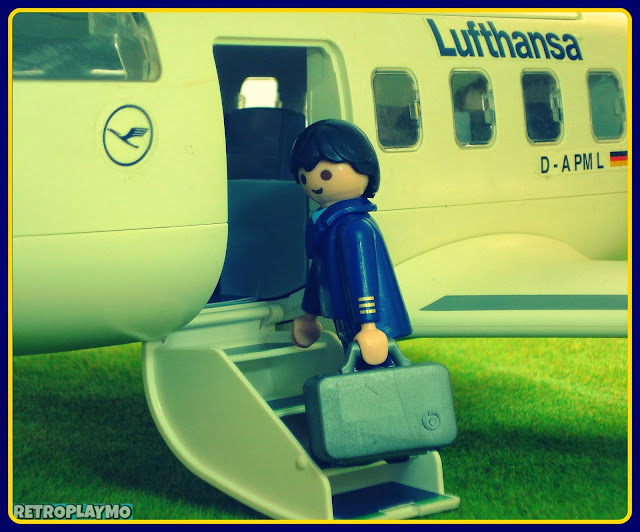Ένας Πιλότος Η' Χειριστής Αεροσκάφους είναι το άτομο που ενεργει άμεσα στις λειτουργίες της κατεύθυνσης ελέγχου πτήσης του αεροσκάφους, ενώ είναι σε πτήση.
Ενώ άλλα μέλη του πληρώματος πτήσης, όπως ο μηχανικός πτήσης,ο πλοήγος, ή οποιοδήποτε άλλο πρόσωπο που συμμετέχει στις εργασίες απευθείας πτήση ενός αεροσκάφους
(είτε πρόκειται για ένα αεροπλάνο με σταθερα πτέρυγια,ειτε περιστρεφόμενων πτερύγιων,
που κινούνται, με ή χωρίς τροφοδοσία),
θεωρούνται επίσης "αεροπόροι ", δεν είναι πιλότοι και δεν ενεργουν σε μια πτήση ή αεροσκάφη.
Τα πληρώματα που δεν εμπλέκονται στη λειτουργία των συστημάτων του αεροσκάφους της πτήσης (όπως συνοδούς,φροντιστές και τους μηχανικούς) καθώς και τα πληρώματα εδάφους γενικά δεν ταξινομούνται ως αεροπόροι.
Σε αναγνώριση των επαγγελματικών προσόντων των πιλότων και τις ευθύνες, τις περισσότερες ένοπλες δυνάμεις και πολλές αεροπορικές εταιρείες σε όλο τον βραβευουν με την κονκαρδα του αεροπορου τους πιλότους τους, καθώς και άλλα πληρώματα των αεροσκαφών.
Σε αναγνώριση των επαγγελματικών προσόντων των πιλότων και τις ευθύνες, τις περισσότερες ένοπλες δυνάμεις και πολλές αεροπορικές εταιρείες σε όλο τον βραβευουν με την κονκαρδα του αεροπορου τους πιλότους τους, καθώς και άλλα πληρώματα των αεροσκαφών.
Αυτό περιλαμβάνει επισης και τους Αεροπορους του Ναυτικου.
Οι μη στρατιωτικοι πιλότοι αεροσκαφών όλων των τύπων ειναι ιδιώτες και πετουν
ειτε για δικη τους ευχαρίστηση με ιδιωτικα μικρα αεροπλανα,
ειτε για καποιον φιλανθρωπίκο σκοπο,
ειτε για λογαριασμο μια εμπορικης επιχείρησης για μη προγραμματισμένες (charter) πτησεις,
ειτε για τακτικες επιβατικες πτησεις και αερομεταφορες φορτιων.
Πιλοτους συναναταμε ακομα και στην Γεωργια (ψεκασμο καλιεργειων κλπ..),
στην Πυροσβεστικη (εναερια πυροσβεση δασικων πυρκαγιων κλπ...)
την Αστυνομια (παρακολουθηση κινησης απο αερος κλπ...)
Όταν πετούν για μια αεροπορική εταιρεία, οι Πιλότοι συνήθως αναφέρονται ως Χειριστές Αεροσκαφών, με τον Κυβερνήτη συχνά να αναφέρεται ως Καπετάνιος.
An
Aircraft Pilot or Aviator is a person who actively and directly
operates the directional flight controls of an aircraft while it is in
flight. While other members of a flight crew such as flight engineer,
navigator, or any other person involved in the direct flight operations
of an aircraft
(whether it be a fixed wing airplane, rotary-wing, powered, or unpowered),
are also considered "aviators", they are not pilots and do not command a flight or aircraft.
Aircrew who are not involved in operating the aircraft's flight systems
(such as cabin attendants and mechanics)
as well as ground crew are not generally classified as aviators.
In recognition of the pilots' qualifications and responsibilities, most militaries and many airlines worldwide award aviator badges to their pilots, as well as other air crews.
In recognition of the pilots' qualifications and responsibilities, most militaries and many airlines worldwide award aviator badges to their pilots, as well as other air crews.
This includes naval Aviators.
Civilian
pilots fly aircraft of all types privately for pleasure, charity, or in
pursuance of a business, and/or commercially for non-scheduled
(charter) and scheduled passenger and cargo air carriers (airlines),
corporate aviation, agriculture (crop dusting, etc.), forest fire
control, law enforcement, etc. When flying for an airline, Pilots are
usually referred to as Airline Pilots,
with the Pilot in command often referred to as the Captain.
Infos/Πληροφοριες





